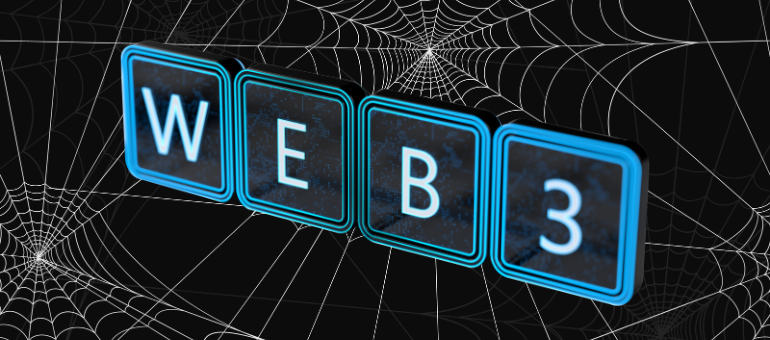
Web 1.0, Web 2.0, and Web 3.0 Explained: What's Next for the Internet?
2024-10-16 09:54:05
By Admin
No Comment
WEB 3.0 (Web 3.0) represents the third generation of web technology. Also known as the Web or World Wide Web (www), it acts as the foundation of the Internet, websites, and web applications. The primary goal of WEB 3.0 is to reduce the dominance and reliance of big tech corporations on user data by adopting a decentralized approach. With Web 3.0, users can have more control over their data and online presence.
What was before Web 3.0? Well, before Web 3.0, there was Web 1.0, and Web 2.0 respectively.
Web 1.0
Era: Late 1990s to early 2000s
Web 1.0 was primarily a passive medium, where users mainly consumed content without actively participating in its creation. It was like a one-way street, with information flowing from websites to users.
Web 1.0 Characteristics:
- Static websites with primarily text and images
- Limited user interaction and participation
- Primarily a one-way flow of information from websites to users
- Focus on providing information and basic online services
Web 2.0
Era: 2000s to 2010s
Web 2.0 introduced a more interactive and collaborative aspect to the internet. It encouraged users to not only consume content but also contribute to it, creating a two-way street of communication and interaction. This shift led to the emergence of social media platforms, blogs, and user-generated content.
Web 2.0 Characteristics:
- Dynamic websites with user-generated content
- Increased user participation and interaction
- Social networking platforms and collaborative tools
- Emphasis on sharing, collaboration, and community building
- A shift from a one-way to a two-way flow of information
What is Web 3.0
Era: 2010s – Onwards
Web 3.0 Concept:
- Decentralization: In Web 3.0, the power isn’t restricted among companies anymore, instead, individuals are given power by a method called decentralization. Data and control are spread out across a network of computers, which reduces the risk of total collapse of the system and makes it more secure.
- Blockchain: Blockchain is a distributed database system that keeps records or blocks of transactional history. Each block is linked to the previous block, making the system interdependent. Using the decentralization method, the database is distributed across multiple computers.
- Interoperability: In Web 3.0, different platforms and systems can operate together seamlessly. Web 3.0 enables you to easily transfer your data and properties between different websites and services without any hassle.
- User Ownership: In Web 3.0, you have more control over your data. Instead of companies owning and selling your personal information, you have the power to decide what happens to it, giving your data more privacy and security.
Google Ranking Factors For SEO
What’s New in Web 3.0
Web 3.0, also referred to as “Decentralized Web” takes a different approach than its predecessors in handling user data. It promises a transparent, more open, and user-centric digital experience.
Here are the potentials of Web 3.0 -
- Decentralized Finance (DeFi)
In Web 3.0, people can directly lend, borrow, and trade money using blockchain technology. This means you don't need a middleman like a bank. Web 3.0 can enable the financial system for individuals, not just big institutions.
- Non-Fungible Tokens (NFTs)
NFTs are like special digital items that can't be copied or replaced. They can represent anything unique, like a piece of art, a collectible, or even a real-world item. Think of them as digital certificates of ownership that open up new ways to buy, sell, and trade things online.
- Metaverse
Web 3.0 introduces a virtual world called metaverse where you can hang out with friends, play games, work, and even buy property.
- Supply Chain Management
In supply chains, Web 3.0’s blockchain technology can help track products from the moment they're manufactured to when they reach you. This makes it easier to keep track of the product’s source and ensure its originality.
Benefits and Advantages of Web 3.0
- Increased Security
Decentralization and blockchain technology can strengthen security by reducing the risk of data breaches and censorship.
- Data Control
Web 3.0 empowers users to have greater control over their data and online experiences.
- Transparency
Blockchain technology provides transparency and accountability, allowing users to verify information and trust transactions.
- Innovation
In Web 3.0, there are lots of opportunities to come up with fresh ideas and create new, exciting things. Because it's decentralized and open, anyone can build new apps, services, and ways of doing business.
The Best Backlink Builder for SEO
Future of Web 3.0
Web 3.0 has the potential to revolutionize industries and reshape society, but its success will depend on several key factors:
- Technological Progress: Ongoing innovations in blockchain, decentralized applications, and user-friendly interfaces will play crucial roles in Web 3.0's success.
- Regulatory Clarity: Supportive and transparent regulatory frameworks are needed to encourage innovation while addressing potential risks.
- User Adoption: For Web 3.0 to reach mass acceptance, it must offer an intuitive user experience, along with education to highlight its advantages.
Although there are some significant challenges, the long-term goal of Web 3.0 is to create a more open, inclusive, and user-centric Internet, rapidly changing the way we engage with technology, conduct business, and define our digital future.



